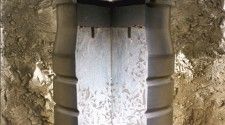
At the recent 29ᵗʰ International Symposium on the Scientific Basis for Nuclear Waste Management in Belgium (MRS 2005), Sarah Watson presented an overview of work for UK Nirex on waste package scenario modelling.
Nirex has supported a programme of work to develop models describing the post-closure evolution of intermediate-level waste packages with the objectives of:
- providing support and justification for the parameters and representations used in performance assessment models;
- informing future model development and packaging advice.
Scenarios for the potential evolution of a waste package were developed and modelled taking explicit account of waste package heterogeneity and the time-dependence of the physical and chemical characteristics of the system. The modelling work highlighted the treatment of organic complexants and the representation of physical containment as two areas in which the impacts of time dependence and package scale heterogeneity might be particularly significant. A further study of the impact of organic complexants emphasised the importance of heterogeneity in package inventory in determining the radionuclide release from the near field.
The degree of containment afforded by the waste form and the waste container has been investigated as part of a study to develop a preliminary understanding of the mixing scales within the repository. The study suggests that the most important control on the release of radionuclides from the waste packages is the integrity of the waste encapsulation grout. Interactions between neighbouring packages are to be expected but the degree to which homogeneous (well mixed) conditions develop may be limited in both time and space.